If you like to walk through a monumental city with medieval layout, Plasencia, north of the province of Caceres en EstremaduraIs a tourism visit highly recommended.
In recent years I have had the opportunity to visit this city several times, because although Plasencia It is not the capital of the province, due to its size and population, about 40.000 inhabitants, it is considered the great city of the north of Extremadura.
Along the history, Plasencia has had great importance, and is currently the center of economic activity in that area of Extremadura, one of whose reflections is the avant-garde building of its Congress Palace, inaugurated not long ago.
I have precisely visited Plasencia to attend a couple of professional conferences, but also taking advantage of getaways to places as interesting as the Monfragüe National Park or, the most recent, to enjoy the Jerte Valley in autumn.
Well, indeed, although Plasencia It justifies its visit in itself, as it is located very close to both natural enclaves, you should not miss the opportunity to visit it if you plan a getaway to Monfragüe or Jerte.
All the information in detail
- 1 Curiosities history of Plasencia in Cáceres
- 2 What to see and do when visiting Plasencia in one day
- 2.1 Walls of Plasencia
- 2.2 Plaza Mayor of Plasencia
- 2.3 Old and New Cathedrals of Plasencia
- 2.4 Palaces in the Cathedral Square in Plasencia
- 2.5 Plaza de San Nicolás in Plasencia
- 2.6 Church of San Nicolás in Plasencia
- 2.7 Parador Nacional de Plasencia, former Convent of San Vicente Ferrer
- 2.8 Plasencia aqueduct
- 3 Map: how to get to Plasencia
Curiosities history of Plasencia in Cáceres
With a long history with origins in the time of the Celts and later presence of the Romans, in your visit of Plasencia now you can see the configuration of an old medieval city which was established at the end of the 12th century.
Specifically, it was in the year 1196 when Plasencia was founded by the King Alfonso VIII in the context of the war with the Muslims.
After a new reconquest of the Almohads, it was in 1201 when the construction of the walls was undertaken, of which there are still various sections in which several doors open to give access to the historic center.
A notable event was when in 1442 it passed into the hands of Pedro de Zúñiga by a Royal concession, until in 1488 the city came under the control of the Catholic kings.
Highlights were the wedding of Juana la Beltraneja and King Alfonso of PortugalOr this Ferdinand the Catholic choose Plasencia as a place of residence for a time.
As a consequence, during the 15th century the city had a great boom as a good part of the Extremaduran nobility resided in Plasencia, leaving behind a great monumental and artistic heritage that you can now see during your visit.
Another current sample of the historical importance of Plasencia is its great role in the Route of Isabel the Catholic in Extremadura.

What to see and do when visiting Plasencia in one day
When considering a Plasencia tourism visit, I will tell you that it is a city that you can know in a day, and on your journey you should focus on its historical Center, since the main monuments and corners are located within what remains of the old walled enclosure.
The city extends from its central Plaza Mayor, and on your walk through its narrow streets you will see numerous palatial buildings, churches and former convents.
Walls of Plasencia
Of the original fortification from the late 12th and early 13th centuries, some sections and gates now remain.
Thus, of the 75 cubes that the wall once had, you can still see 20, as well as the gates of the sun, Trujillo, Berrozana and the Lucia Tower.

In the Trujillo gate, a corner that you should not miss, is the Hermitage of Health, with a barrel vault, and in the Lucia Tower lies the Interpretation Center of the Medieval City of Plasencia.
Plaza Mayor of Plasencia
La Plaza Mayor It is the center of life in Plasencia.
Always with a great atmosphere, you will see the terraces of the bars located in the arcaded galleries that extend across a good part of the square.
The most notable building is the town hall, from the 16th century in the style of transition from gothic to renaissance, which is culminated by a clock tower where you can see the figure of the grandfather mayorga, a popular icon of Plasencia.
ORGANIZE your TRIP
- Don't forget your TRAVEL INSURANCE with a 5% discount
- Book the HOTEL for your trip
- RENT a CAR for your trip
- The best TOURS and EXCURSIONS in Spanish
- NO-LINE TICKETS for museums and monuments
- Best FREE TOURS around the world
- Book your TRANSFER from the airport
- eSIM card with INTERNET at the best price
In another order of things, in the square the narrowest building in Plasencia will also catch your attention, and you will “squeak” at the architecture of a reddish building that was built in 1936 to block the view from the Plaza de la Plaza. St. Stephen's Church.
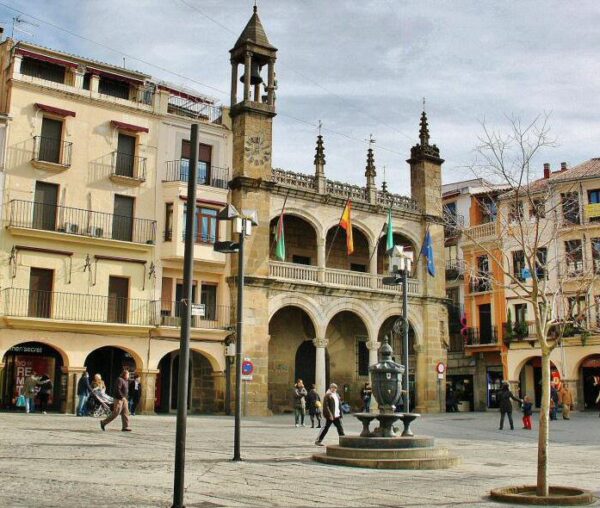
To highlight the great market which on Tuesdays takes place at Plaza Mayor of Plasencia, where in addition to fruits and vegetables, you can buy iron crafts and leather goods.
If you go on a Friday, you can see another fruit and vegetable market.
The Plaza Mayor, on the way to the cathedral, you will pass through the aforementioned St. Stephen's Church, where the poet got married Gabriel and Galan, and by the market building.
You can also see the building flamboyant gothic of the Claras Convent, current headquarters of Municipal Cultural Center and the Plasencia Tourist Office.
Old and New Cathedrals of Plasencia
You may also be surprised to find a cathedral in Plasencia, which is a reflection that only three years after its foundation it already had archiepiscopal seat with hierarchy over Medellín and Trujillo.
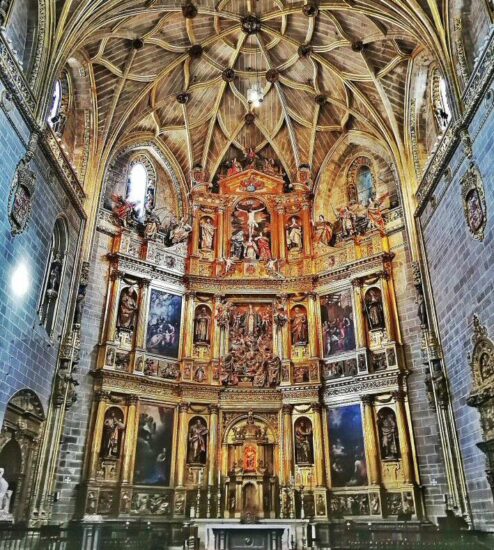
With a chaotic exterior design, it is actually two cathedrals built successively and superimposed from the 13th century.
La old cathedral It's style transition from Romanesque to Gothic, and externally its beautiful Romanesque doorway with archivolts stands out, which you find facing west.
It began to be built in the 13th century and has three naves, and next to it you can visit a Cistercian style cloister.
The one known as new cathedral Construction began in 1498 and the work stopped in 1578, so that it has remained unfinished and overlapping the building of the old cathedral, separated internally by a wall.
La new cathedral It is in Renaissance style and on the outside you will be struck by the large doorway of plateresque style that was left unfinished, while inside you will see a sumptuous decoration with pan de oro.

Palaces in the Cathedral Square in Plasencia
In the Plaza de la Catedral You can also see other notable buildings, such as the Episcopal palace de Renaissance style, Dean's House, from the 17th century, or the adjacent ones palaces of the Counts of Torrejón and Doctor Trujillo, style plateresque gothic.
You can also see the building of the old Pilgrims Hospital founded in the 14th century, with a Renaissance façade, which is now the headquarters of the Santa María cultural complex.
Plaza de San Nicolás in Plasencia
I will tell you that the San Nicolás square is my Favorite corner of Plasencia.
In this enclave and its surroundings is where you can best feel the historical importance of this Extremaduran city, with the palace of the Marquises of Mirabel as a great protagonist.
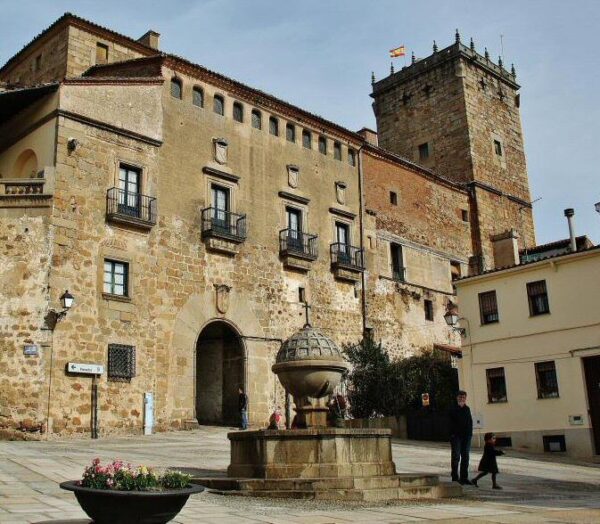
It is a 15th century building with a two-story neoclassical patio.
Under the building you can see a large arch that the owners had to open after a trial that lasted 150 years in order to give access to the old Jewish Quarter of Plasencia.
Church of San Nicolás in Plasencia
On the other side of the square, in front of the palace, you can see the Church of San Nicolás with a transitional Romanesque façade, and in its back part there is a small square where the House of the Two Towers.
From the 13th century, it is oldest palace in Plasencia, with a Romanesque façade and neo-Gothic façade, and it housed Ferdinand the Catholic.
Don't forget your Travel Insurance
Are you organizing your trip or getaway? Don't leave without take out your travel insurance before, and here we explain why. If you hire it with us, you have a 5% discount
Parador Nacional de Plasencia, former Convent of San Vicente Ferrer
At the bottom of the San Nicolás square the old building is located Convent of San Vicente Ferrer, current headquarters of National Parador of Plasencia.
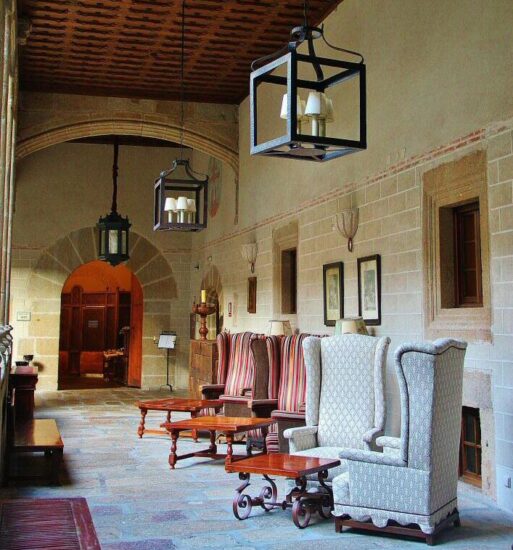
It was built by the Lords of Zúñiga in the 15th century, and to do so they demolished an area of the old Jewish quarter, whose community was moved to houses located in the streets surrounding the current Plaza Mayor.
When you walk through those streets you can see plaques that tell you the name of the Jewish owner of the house that was in a certain place.
In this dominican convent, which is why it was also known as Santo Domingo, highlights a beautiful Renaissance cloister or the old sacristy that is decorated with Talavera tiles.
Without a doubt that of Plasencia It is one of the best paradores from the point of view of its architectural interest.
In addition to those indicated, during your visit or stay there you can see very interesting corners, such as the open staircase of the cafeteria, a great architectural work, or eat in the old cabinet.
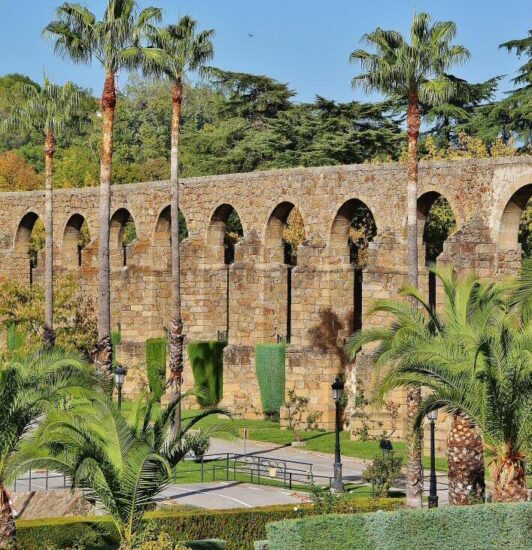
Plasencia aqueduct
Finally, you may be surprised to know that in Plasencia there is a aqueduct.
El Aqueduct of San Antón It was built in the mid-16th century to supply the city with water from the nearby mountains.
Map: how to get to Plasencia
The city of Plasencia is north of the province of Cáceres, riding a Estremadura, one hour north of the city of Cáceres and two and a half hours southwest of Madrid.


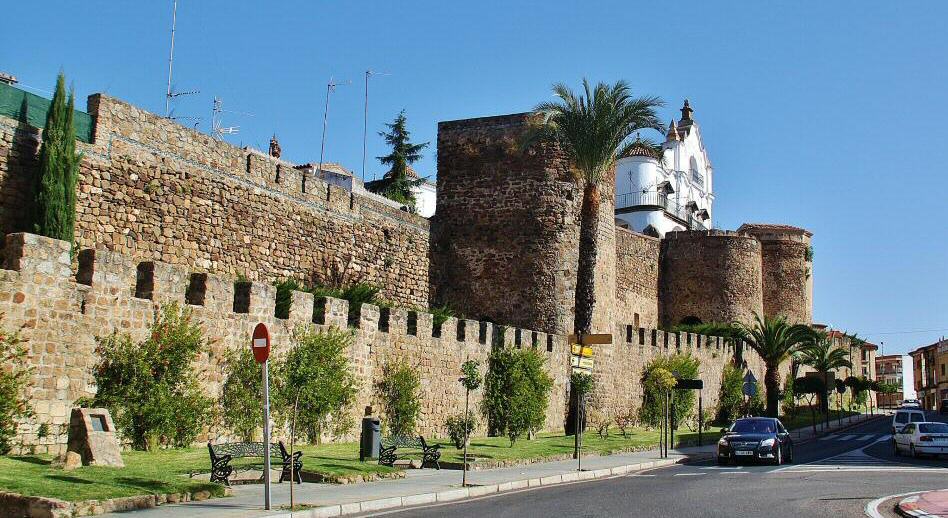

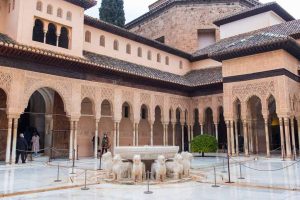
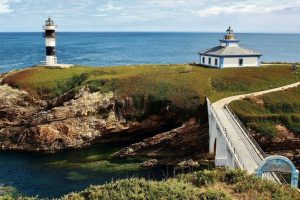











Very complete! Next week… We will visit all those monumental places
Thanks for sharing !
I will be there at the end of December, and I didn't know that National Highway 110 passes through the Jerte Valley so I will return to see the cherry blossoms.
Very complete. Thank you
I'm going to go at the end of October/2019...and I'm already looking forward to being there.Thank you